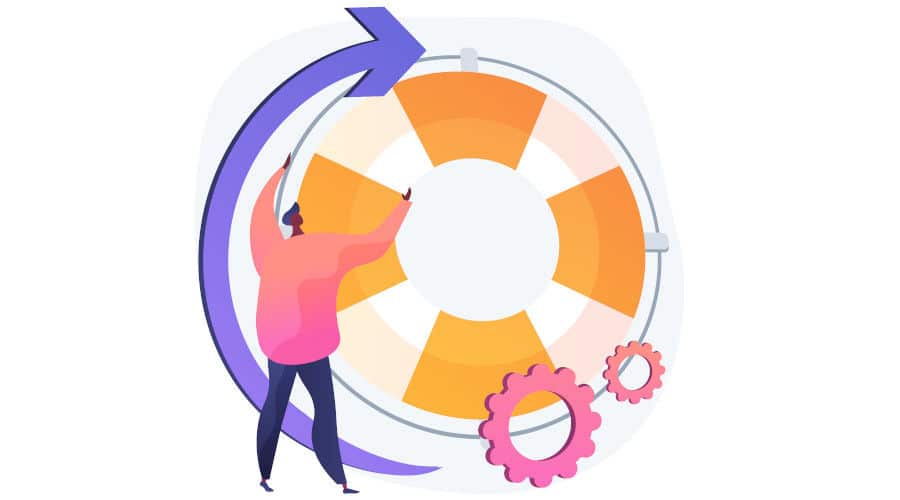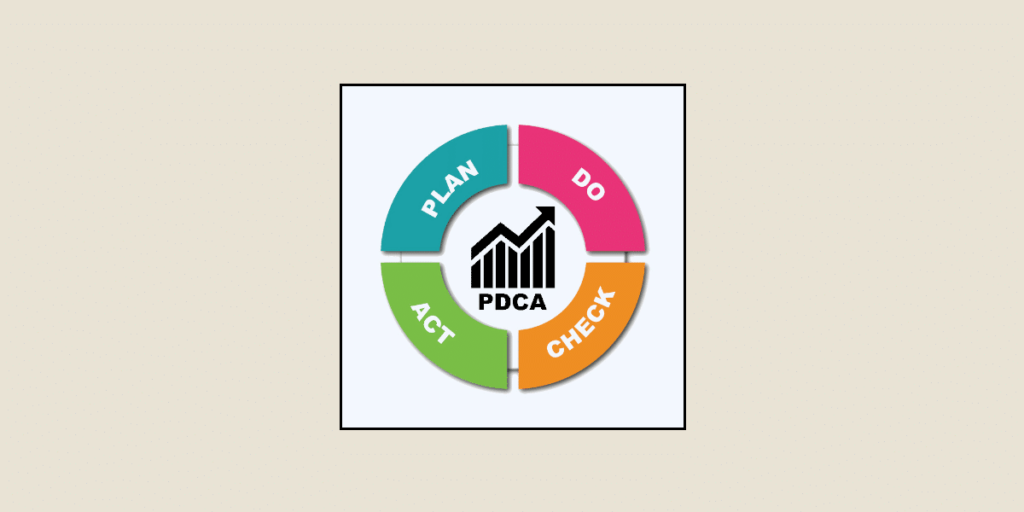"To improve, you have to change. So to be perfect, you must have changed often". With this quote, Winston Churchill perfectly describes the Deming wheel: the need for regular change to achieve targeted objectives. And this applies just as much to the scale of a state, a company, as it does to your web projects.
Let’s take a closer look at the Deming wheel, how it works and how DevOps uses it.
Let's take a closer look at the Deming wheel, how it works and how DevOps uses it.
Developed by William Edwards Deming in the 1950s, the Deming Wheel is now an essential tool for corporate project management.
And with good reason: it is part of a quality approach and a logic of continuous improvement through the implementation of 4 major PDCA phases: Plan, Do, Check, Act. In fact, the PDCA cycle and the Deming wheel are used synonymously.
These different phases, which are linked together repeatedly, enable the organization to move progressively towards its objective.
How does the Deming wheel work?
The Deming wheel is based on 4 main phases that need to be analyzed.
1 - Plan
It’s all about preparation and planning. To do this, teams must :
- Define the objective to be achieved;
- Identify the tasks and missions to be carried out to achieve the objective;
- Appoint people to be responsible for each task;
- Define performance indicators (KPIs) to measure project progress.
2 - Do
This is the action phase, when each stakeholder must carry out the tasks set out in the planning phase.
To improve the efficiency of the Deming wheel, it is preferable to plan limited tasks. As the process is repetitive, the execution of small tasks makes them much easier to control and manage.
3 - Check
After the action has been taken, the results need to be verified, measured and compared with the initial forecasts. This is where performance criteria come into their own.
This verification phase is undoubtedly one of the most important on the Deming wheel. It enables you to become aware of any difficulties encountered, to learn from your mistakes and to improve your forecasts of the project’s success.
Good to know: this step was replaced by William Edwards Deming himself in Study. The idea is not simply to check, but rather to study and analyze. Data analysis is therefore essential for measuring progress.

4 - Act
Based on the results identified in the verification phase, stakeholders must make decisions. This mainly involves correcting errors, identifying points of vulnerability, and implementing new actions or processes.
As this is a wheel, the aim is to repeat all 4 phases. In other words, users of this methodology return to the first “Plan” step in order to improve the process, product or service proposed. And they do so until the final objective is definitively achieved.
However, while PDCA is based on cyclical operation, the aim is not to go round in circles without ever moving forward, like a mouse in a cage. Instead, the various stages of the Deming wheel allow experience to be accumulated by taking into account all the progress made. In this way, teams are able to optimize results each time the process is restarted.
Ultimately, the Deming Wheel is a virtuous circle that enables organizations to continuously improve thanks to this almost infinite repetition.
How to use the Deming wheel in your web projects?
The Deming wheel is one of the essential methods used by DevOps practitioners. And with good reason: the PDCA cycle is in line with the main principles of the DevOps movement, and in particular of the agile method. For example:
- Continuous improvement: this is the very objective of the Deming wheel and DevOps. The aim is to take advantage of all experience gained to optimize results.
- Continuous integration and deployment (CI/CD): this technique takes all the PDCA steps and automates them to save time and increase efficiency.
- Iteration: this involves taking small steps, through a gradual process. This makes it easier to control bugs and steer the web project.
By applying this method, DevOps are able to deliver much higher quality results to their users. And all the while delivering faster, since small errors are corrected immediately (and not at the end of the project, when a pile of bugs has to be rectified).
Learn the right methodology with DataScientest
Learning software and application development isn’t just about mastering complex technical tools. In addition to programming languages, CI/CD tools, database management systems…
It also means applying the right methods, such as the Deming wheel. At DataScientest, you’ll learn not only how to use the essential tools, but also how to work methodologically to optimize your efficiency. So you’ll be up and running as soon as you finish our DevOps training.











